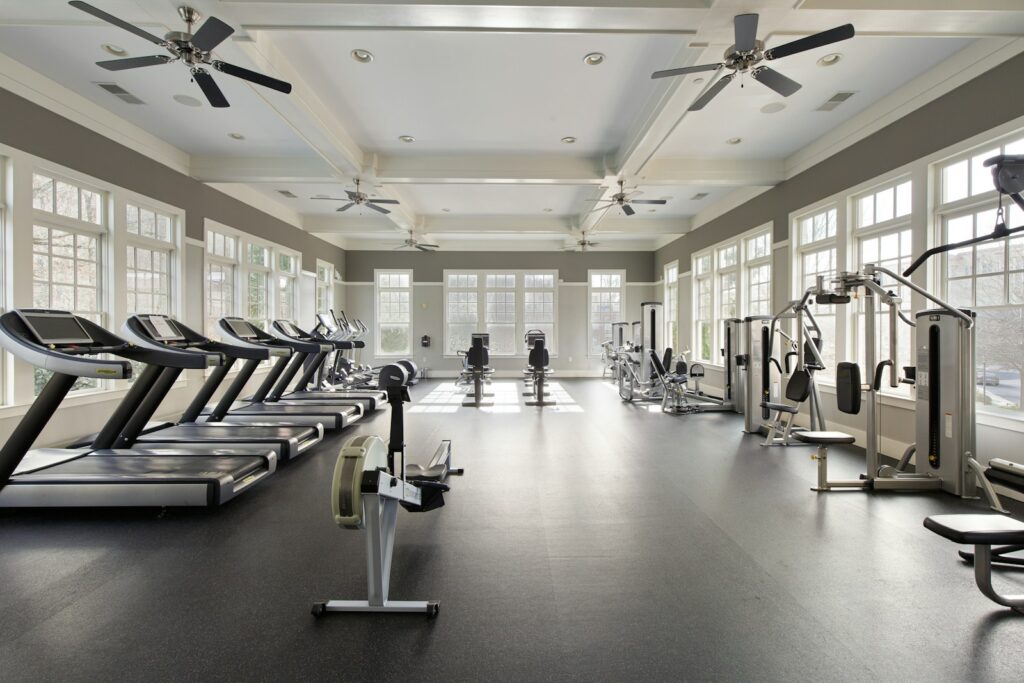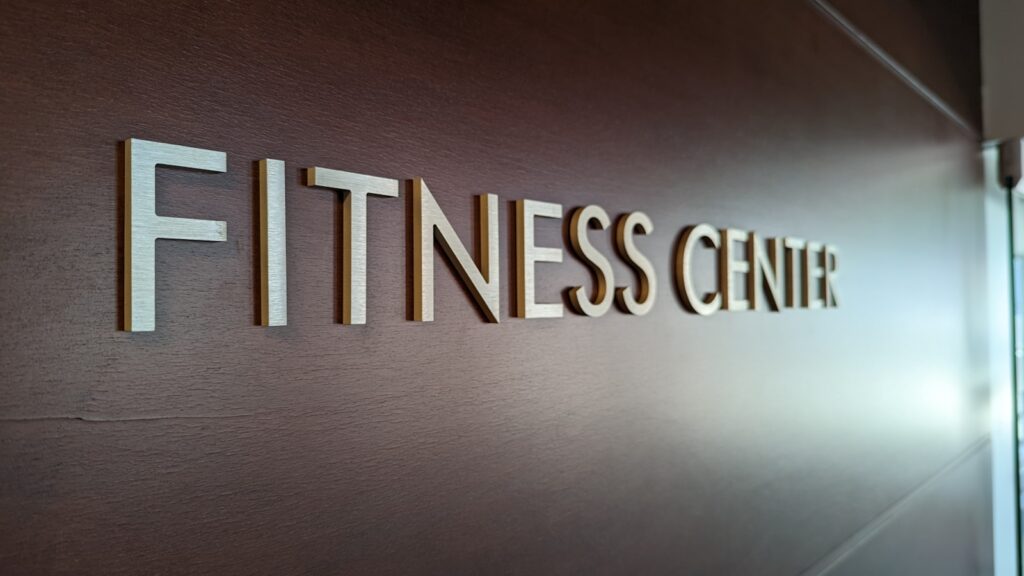
With rising costs on everything from rent to groceries, many of us are constantly looking for ways to cut back as much as possible. Joining a gym, while a fantastic investment in your health, can often appear as a large expense that might stretch your budget. The good news, however, is that inflation hasn’t hit the fitness industry as hard as other sectors, leaving plenty of room for savvy consumers to find exceptional value. It’s a significant outlay for many, but with the right approach, it doesn’t have to break the bank.
It’s also entirely possible to score a far better deal than what you might initially see advertised online or posted on a brochure. The key lies in knowing how to negotiate the right way and planning your approach strategically. We’ve spoken to former sales associates and industry experts who have generously shared their insider tips. These proven strategies can empower you to finagle the best possible price for your fitness journey, ensuring you get maximum value for every dollar spent.
This comprehensive guide is designed to empower you with the knowledge and tools needed to optimize your gym membership experience. It’s about taking control of the negotiation process, cutting costs effectively, and making a healthier lifestyle more accessible without compromising your financial well-being. So, if you’re eager to sweat it out and sculpt your physique without your wallet weeping, prepare to master the art of smart gym membership negotiation.

1. **Know Your Budget and Needs**Before you even step foot into a gym, the most crucial first step in any negotiation is understanding your own financial boundaries and fitness aspirations. As Taylor White, a former studio manager at F45 in Washington, DC, sagely advises, “You can ask for anything you want out of a gym, really.” She emphasizes that knowing your absolute maximum willing expenditure will not only guide your discussions on price options but also equip you with the confidence to walk away if a gym cannot accommodate your budget. This clear understanding of your financial limits is your primary bargaining chip.
Beyond just the price, it’s equally important to define what you truly need and value in a fitness facility. What are your specific fitness goals? Are you aiming for muscle gain, weight loss, toning, or perhaps physical rehabilitation? Different objectives necessitate different gym facilities and classes. For example, a heavy weightlifting enthusiast might find a budget gym with limited free weights unsuitable, while someone focused on group fitness might prioritize a diverse class schedule over extensive cardio equipment.
Be honest with yourself about how much you will realistically be going and what amenities you will genuinely utilize. White aptly notes, “Everyone has different lifestyle goals so join a gym that fits your wants and needs best.” There’s no point in paying for premium access to a swimming pool, sauna, or a wide array of specialty classes if you know you’ll rarely, if ever, use them. These “extras” only add value to your membership if they align with your actual usage and preferences, so prioritize accordingly to avoid unnecessary costs.
Moreover, shopping around is a non-negotiable part of this initial preparation. Just because the first place you approach doesn’t offer a plan that works for you, that doesn’t mean another gym won’t. Knowing the rates and offerings of competing gyms can significantly bolster your bargaining power, providing you with leverage during negotiations. This due diligence ensures you’re not negotiating in a vacuum, but from an informed position about the market landscape.
Read more about: Unpacking the ‘Why’: Decoding Your Skyrocketing Homeowner’s Insurance Bill and Strategies to Bring it Back to Earth

2. **Master the Art of Timing**While intrinsic self-motivation is paramount for sticking with a workout program, the timing of your gym membership sign-up can dramatically influence the deal you secure. There are specific periods throughout the year when gyms are far more eager to offer enticing discounts and incentives. Taylor White highlights these prime windows, stating, “Typically, I would see the best joining deals happen around the new year, and around May at the beginning of summer.” Capitalizing on these seasonal fluctuations is a smart move for any budget-conscious fitness enthusiast.
January, for instance, witnesses a significant surge in new memberships as people commit to New Year’s resolutions. Caroline Mayhew, a former sales associate at Orangetheory Fitness, explains that gyms strategically offer incentives and discounts during this period to remain highly competitive. Everyone is getting “an extra pep in their step to get back in the gym,” creating a high-demand environment where gyms actively vie for new members through attractive promotions. This competitive landscape works directly in your favor, as facilities are pressured to offer compelling deals to capture the influx of potential clients.
Conversely, the summer months, typically from May through August, represent a slower period for many gyms. As the weather improves, more people opt for outdoor activities or travel, leading to a dip in gym attendance and new sign-ups. Mayhew reveals that during these times, “Gyms are willing to do anything to keep their membership retention up.” This decreased demand translates into a golden opportunity for you to leverage. Gyms become more creative and flexible, offering perks such as free week trials or deeply discounted introductory months to draw in new members during their lean season.
Beyond seasonal trends, focusing on the end of the month can also be a highly effective negotiation tactic. Gym salespeople, much like their counterparts in other industries, often operate under monthly quotas. As the end of the month approaches, they may be scrambling to hit their targets. Engaging them at this critical juncture means “they’ll usually be scrambling to hit their number and will be a lot more likely to offer you their best deal.” This creates a sense of urgency on their part, which you can deftly use to your advantage to secure a better price or additional perks.
Casey Lee, a personal trainer with 12 years of health club experience, further reinforces this strategy. If you’re not getting the deal you want, she suggests calling back “three days before the end of the month and make the same offer.” This tactic plays directly into the salesperson’s urgent need to meet their financial goals by the month’s close. By timing your approach strategically, whether it’s during a specific season or at the end of a sales cycle, you position yourself to benefit from the gym’s desire to boost its membership numbers.
Read more about: Rewind to the ’70s: 15 Iconic Actresses Who Mastered Allure and Cinematic Brilliance

3. **Read the Fine Print and Target Fees**Navigating the intricacies of gym membership agreements requires a keen eye for detail, especially when it comes to understanding all the potential costs involved. While some fees are often non-negotiable due to corporate policy, many others represent significant wiggle room for negotiation. Caroline Mayhew points out that “non-negotiables are typically things that are corporate policy, like late cancel fees if you are signing up for a group fitness class or membership cancellation fees.” These are often standardized across a chain and less likely to be waived, so it’s wise to be aware of them upfront.
However, a common oversight for many new members is the presence of an annual fee or a one-time sign-up fee, which are typically charged in addition to your regular monthly dues. This is where your negotiation skills can truly shine. These initial charges are frequently negotiable, and you might be able to convince a sales representative to waive them entirely. Many former gym employees confirm that these fees are often discretionary and serve primarily as a negotiation point for the gym, rather than reflecting an actual, unavoidable cost.
Indeed, experts emphatically state that you should almost never pay a sign-up fee or a registration fee to join a new gym. These fees can range anywhere from $50 to $200, and they are, crucially, “ALWAYS up for negotiation.” Matt, a former gym employee, explicitly stated, “[The fee] was usually $50 but we could cut it in half first but if they did not want to sign up we could wave it. They usually did sales anyway where it was $0 to sign up so they never really cared about that fee.” This insider perspective confirms that these fees are often arbitrary and a prime target for elimination.
For the most part, these sign-up costs represent straight profit for the gym and serve no real purpose other than providing a starting point for negotiations. If you find that the gym is unwilling to budge on the monthly price, absolutely make a strong push to get them to waive any of these initial charges. This is often the primary area where gym salespeople and managers have the most flexibility and discretion, allowing them to make a concession without impacting their core recurring revenue. By focusing on these easily waivable fees, you can significantly reduce your upfront expenses and secure a more favorable overall deal.
Read more about: 14 Simple, Smart Ways to Get Free or Cheap Roadside Assistance Beyond AAA

4. **Leverage Available Discounts**Never assume that the first price quoted is the only price available. Many gyms offer a variety of discounts and special promotions that might not be immediately advertised. As Taylor White advises, “There are sometimes specials that you might not know about until you ask, so speak up.” These “rolling promotions” cycle through different seasons, but specific demographic discounts are often available year-round. It’s always worth inquiring, as a simple question could unlock substantial savings.
Both White and Caroline Mayhew strongly suggest asking about specific categories of discounts. These commonly include family, friend, or first responder discounts. Additionally, don’t hesitate to inquire about special rates for students, teachers, or military veterans, depending on what applies to you or your family members. Mayhew further highlights a frequently overlooked avenue for savings: “If you work for a large or local corporation, there may be a discounted corporate rate offered that you are eligible for.” Many companies are increasingly investing in employee wellness programs, and a quick check with your HR department could reveal a pre-negotiated corporate rate.
Corporate wellness programs are becoming a powerful tool for companies to support their employees’ health, and these partnerships with gyms can lead to significant cost reductions, sometimes cutting membership fees by up to 50%. Moreover, many gyms actively promote group discounts, which can be beneficial if you’re planning to join with friends, family, or as part of an organization. Joining together as a group often reduces the individual fees for everyone involved, making fitness more accessible and affordable.
Another crucial, yet often forgotten, avenue for savings lies with your health insurance provider. It’s highly recommended to “contact your health insurance to see if they offer any deals with specific gyms or if they’ll reimburse you for part of your membership.” Many health insurance plans either have direct partnerships with certain fitness centers offering discounted rates or provide reimbursements for a portion of your monthly membership fee. This is a legitimate way to reduce your out-of-pocket expenses that too many people overlook.
Finally, remember that the best time to inquire about and lock in these various discounts is during your initial sign-up, rather than when you’re attempting to renew. As Mayhew puts it, “Ultimately, things are a lot easier to negotiate or lock in a lower rate at the beginning.” Gyms are typically more flexible and eager to attract new members, making the initial negotiation phase your prime opportunity to stack discounts and secure the most favorable terms possible.
Read more about: Debunking the Car-Buying Myths: Your Guide to the 10 Best Times to Score a Deal

5. **Consider Membership Tiers and Contract Length**When exploring gym membership options, it’s vital to align your chosen plan with your actual usage and fitness goals, rather than simply opting for the most comprehensive or, conversely, the cheapest option without proper consideration. Begin by being rigorously honest with yourself about how frequently you anticipate using the gym. Taylor White notes that “Some gyms have different terms of contracts,” offering various tiers tailored to different member needs. If you realistically know you’ll only be able to visit the gym twice a week, an unlimited membership might be an unnecessary expense, and a more limited, session-based, or off-peak option could save you money.
It’s also important to inquire about the flexibility of your membership should your circumstances or fitness routine change. Ask whether you are easily able to modify your membership, scaling up or down, if you later decide to increase or decrease your gym attendance. A flexible contract can save you from being locked into an unsuitable plan, providing peace of mind and financial agility. This foresight allows you to adapt your membership as your life evolves, ensuring you’re always getting the best value.
If you are confident in your long-term commitment and know you’ll want to be a member for at least a year, or even two, leveraging contract length can be a powerful negotiation tactic. Don’t hesitate to “ask if you can get a deal for signing a longer contract.” While not every gym offers this, many are willing to provide a reduced monthly rate in exchange for the security of a longer-term commitment. This represents a win-win: the gym secures a member for an extended period, and you benefit from lower monthly payments.
However, be acutely aware of the sales tactics surrounding contract length. Former employees reveal they are often “trained to start negotiating from the longest possible contract first.” While these extended agreements typically come with the best monthly price, they also lock you in for a longer duration, maximizing the gym’s profit from you. This isn’t inherently bad if you’re genuinely happy with the gym and the price, but it’s crucial to understand how they profit most from longer commitments.
Critically, a long contract can become a detriment if your life circumstances change unexpectedly. You could find yourself in a difficult situation if you’re locked into a multi-year deal and have to move, or if you get injured and become unable to work out. Therefore, contract length should definitely be a key point of negotiation. The goal is to avoid being “locked into an insanely long contract just to get a reasonable price.” Savvy negotiators aim to “get the 3-year price on a 1-year deal, if possible,” demonstrating that flexibility and value can go hand in hand with strategic commitment.
Read more about: Car Subscription Services: A Comprehensive Review to Determine Their Value and Fit for Your Lifestyle

6. **Be Ready to Walk Away**One of the most potent weapons in any negotiation arsenal, especially when dealing with gym memberships, is the willingness and readiness to walk away. This isn’t just a bluff; it’s a fundamental principle of negotiation 101 that can often compel a salesperson to offer their absolute best price. As the adage goes, “Walking away and letting them stew is often a great way to get their real best price.” It signals to the gym that you are not desperate and that you have other options, thereby shifting the power dynamic in your favor.
Understanding the gym’s perspective can illuminate why this tactic is so effective. Matt Huey, a physical therapist and former gym employee, shared an insightful piece of internal training: “The managers told us that many people come in on the impulse to get in shape and if you let them leave without buying then they would most likely change their mind.” This ingrained belief makes gym salespeople incredibly hesitant to let a potential member leave without signing up. They perceive a higher risk of losing the sale entirely if you walk out the door, which creates an urgent incentive for them to sweeten the deal.
To effectively employ this tactic, you need to articulate your position clearly and firmly. Politely inform the salesperson that you need more time to think about it, that you want to visit a few other gyms, or that you need to discuss the decision with a significant other. Such statements often prompt them to make an immediate concession or offer a better deal on the spot. Your calm resolve to consider alternatives demonstrates that you are a serious, discerning buyer who won’t be rushed into a decision.
This strategy is often most impactful after you’ve already engaged in some negotiation with a salesperson and possibly even escalated your discussion to a manager. If, after these initial discussions, you still haven’t received an offer that meets your budget or expectations, that’s the moment to firmly state your need to “think it over and get ready to leave.” This action applies significant pressure on the sales team, as they’ve already invested time and effort in trying to close the sale.
Ultimately, your guiding principle should be unwavering: “If you can’t get the price you want, you shouldn’t sign the papers.” Never commit to a membership you cannot comfortably afford. Your power as a consumer lies in your ability to decline an unsatisfactory offer and explore other options, whether that means another gym, another location, or simply waiting for a better deal. By being ready to walk away, you empower yourself to secure a gym membership that genuinely fits your budget and provides true value, rather than succumbing to sales pressure.
Now that you’ve mastered the basics of gym membership negotiation, it’s time to elevate your game with advanced strategies. These aren’t just clever tricks; they’re proven tactics that can help you secure even better deals, transforming your gym membership from a significant expense into a smart investment in your health. Let’s dive into the next set of powerful approaches to maximize your savings and get the most out of your fitness journey.
Read more about: Debunking the Car-Buying Myths: Your Guide to the 10 Best Times to Score a Deal

7. **Compare Competitor Offers and Price Matching**One of the most effective ways to drive down your gym membership cost is by leveraging competitor pricing. Just as you might with a big-ticket retail item, you can approach your preferred gym with a service quote from a rival facility. Casey Lee, a personal trainer with extensive health club experience, advises: “Take one gym’s service quote and bring it to the gym you want to actually go to.” This isn’t just about getting a match; it’s about showing urgency and demonstrating your due diligence as a discerning consumer.
When presenting a competitor’s quote, be prepared to state your intention to sign up and pay that day if they can match it. Lee explains, “urgency wins and the quote from the competing gym shows urgency and due diligence on your part.” This puts pressure on the sales team to close the deal, knowing they might lose you to a competitor if they don’t respond favorably. Before you even set foot in your top-choice gym, invest some time in researching and collecting a few quotes from other facilities in your area. This will arm you with concrete evidence to back up your negotiation.
Remember, this tactic works best when the competing gyms offer comparable services and amenities. Don’t compare a budget gym’s basic offering to a premier health club’s comprehensive package. Instead, focus on facilities that are genuinely similar in their offerings. By doing your homework and presenting a solid case, you significantly increase your chances of securing a price match or even a better offer at your gym of choice, ensuring you get the best value for your money.
Read more about: From Coveted Rides to Faded Dreams: 10 Once-Trendy Vehicles That Couldn’t Keep Their Luster

8. **Utilize Off-Peak Hours and Less Popular Locations**For those with flexible schedules, committing to off-peak hours can unlock significant savings. James Crawford, co-founder of DealDrop, points out that “In many gyms, you can save money on registration if you commit to going to the club when no one else can, which implies going earlier in the day before 4 p.m. on a workday and later in the day on weekends.” This is a strategy that can save you a substantial amount, sometimes up to 30% to 40%, because gyms want to optimize their facility usage during slower times.
It’s crucial to understand that gyms don’t always openly advertise these off-peak rates, so you absolutely need to ask. If your work-from-home schedule or unemployment allows for daytime workouts, this could be a game-changer for your budget. By consciously choosing to work out when the gym is less crowded, you not only save money but also enjoy more space and easier access to equipment, enhancing your overall gym experience.
Another clever strategy involves exploring less popular gym locations. Salespeople at highly popular gyms in busy urban centers might meet their quotas more easily, making them less flexible in negotiations. However, quieter locations, perhaps in the suburbs, might be “a lot more thirsty for a new sale.” If your membership allows multi-location access, consider negotiating and signing up at a slightly farther, less-trafficked branch.
By visiting a quieter location during non-peak hours, you might encounter the “B squad” – sales staff who are not as skilled or pressured as their counterparts during peak times. These individuals might be more willing to negotiate. This tactic allows you to secure a better deal at a less busy location, while still retaining the convenience of using the closer, more popular gym for your workouts, assuming your membership tier permits it. It’s a smart way to capitalize on a gym’s varying demand across its network.
9. **Take Advantage of Upfront Payment and Outdated Sales**If you have the financial capacity, paying for a significant portion of your membership upfront can be a powerful negotiation tool. Cash is indeed king, especially when dealing with smaller gyms. Personal trainer Kate Meier advises, “One way to try and get a better price on a gym membership is to ask if there is a discount if you pay in full for 3 months, 6 months or even a year.” Many gym owners prefer the guaranteed cash flow over month-to-month payments, which can translate into a lower overall cost for you.
This strategy is appealing to gym owners for several reasons, including potential tax benefits or improved cash flow. While it requires a larger upfront outlay, the long-term savings can be substantial. It demonstrates your commitment and reduces the administrative burden on the gym, making them more amenable to offering a discount. Always inquire about these options, as they are rarely advertised prominently but can be a significant money-saver.
Beyond upfront payments, don’t be afraid to reference outdated sales or promotions you might have seen. Gyms frequently run sales throughout the year, and even if a deal has technically expired, you can still try to leverage it. Casey Lee suggests that if you saw a deal – for example, “a family membership for $300 off a year, but the deal passed” – you should “Ask to pay that price because if the gym did it once, they will do it again.”
If your initial request for an expired deal is met with resistance, remember the “end of the month” timing trick. Lee recommends, “Not getting the answer you want? Call them back three days before the end of the month and make the same offer.” Salespeople often have monthly financial quotas they need to meet, and as the deadline approaches, they become more flexible to hit their targets. This creates an urgent incentive for them to accommodate your request, potentially giving you access to a deal that technically should no longer be available. Having cash on hand or being ready to commit can further sweeten the offer for them.
Read more about: Beyond the Windfall: Unmasking the Hidden Costs of Inheriting a House That Can Secretly Destroy Your Wealth

10. **Tap into Free Trials and Referral Programs**Before making any commitment, always look for opportunities to experience the gym firsthand without any financial obligation. Many gyms offer free trials, ranging from a few days to a week or even a month, allowing you to thoroughly assess the facilities, classes, and overall atmosphere. Caroline Mayhew, a former sales associate, notes that during slower periods like summer, “Gyms try to get creative to draw in new members” by offering perks like “a free week trial or a discounted introductory month.” These trials are invaluable for ensuring the gym is the right fit for your needs and preferences before you invest.
Furthermore, gyms actively use referral programs to attract new members, and you can leverage these for significant savings. If you know current members, ask them if their gym has a referral incentive. Often, both the new member and the referrer receive benefits, such as a free month, discounted rates, or other perks. As Mayhew suggests, a simple question can sometimes “score you a free water bottle, sweat towel, friend referral, or best case, a cheaper membership.”
Family, friend, or corporate referrals can also lead to discounted rates. Many gyms offer group discounts if you can get other people to join with you. For instance, if you can guarantee a minimum number of memberships through your workplace, you might be able to negotiate a reduced corporate rate. Additionally, don’t forget to check with your health insurance provider. Many plans either partner with specific gyms for discounted rates or offer reimbursements for a portion of your monthly membership fee. These overlooked avenues can substantially reduce your out-of-pocket expenses, making your fitness journey more affordable.
Read more about: 14 Simple, Smart Ways to Get Free or Cheap Roadside Assistance Beyond AAA

11. **Engage Sales Staff Strategically**When you’re interacting with gym staff, remember that your engagement can be a negotiation tactic in itself. Taking up a salesperson’s time, asking detailed questions, and getting a thorough tour can work to your advantage. Salespeople are invested in closing a deal once they’ve spent a significant amount of time with you, concerned about their “sunk cost.” This investment makes them more willing to make concessions to secure your membership rather than losing the sale entirely.
An advanced tactic, straight from a former gym sales manager, is to “mention to the salesperson that you’re interested in personal training.” Even if you’re not entirely committed to personal training, expressing interest immediately makes you a potentially “A LOT more profitable” prospect for the gym. They might be more inclined to cut a special deal on your membership price if they believe they’ll generate more revenue from you down the line through training packages.
Another approach is to explain why their quoted price doesn’t work for you, perhaps with a genuine reason like being a “broke college student” or having unexpected financial constraints. Many commercial gyms offer special rates like student, corporate, or military discounts. If you can get the salesperson on your side and build a rapport, they might be able to apply one of these special rates to your membership, even if you don’t perfectly fit the standard criteria.
Finally, remember to pick your moments. Matt Huey, a physical therapist and former gym employee, advised that commercial gyms often staff peak hours with their top salespeople, while later in the evening or early afternoons, you might encounter the “B squad.” This less-experienced team may be “not nearly as skilled at sales and negotiation,” making them potentially more amenable to hardball tactics and concessions. Strategically engaging staff, especially at opportune times, can significantly tip the negotiation in your favor.
Read more about: Debunking the Car-Buying Myths: Your Guide to the 10 Best Times to Score a Deal

12. **Uncover Online Hidden Deals and Promo Codes**In the digital age, a wealth of information and potential discounts lies just a few clicks away. Savvy negotiators know to scout online discussion forums like Reddit before stepping into a gym. You can find “tons of discussion threads where people openly discuss exactly how much they paid to join any given gym and how they got their best deal.” This insider knowledge empowers you to walk into a gym with confidence, knowing what a reasonable, negotiated price looks like.
Beyond forums, actively search for promo codes and coupons. Websites like Groupon and LivingSocial are excellent resources for finding offers that typically cut prices on first-time memberships or class packages. These can be golden opportunities to snag a deeply discounted introductory rate. Always check these sites before committing, as you might unearth hidden codes for significant extra savings.
Signing up for gym newsletters is another simple yet effective tactic. Many retailers and service providers offer exclusive discounts to new subscribers. By signing up for a gym’s email list, you might unlock welcome deals or receive alerts about upcoming sales and special offers directly in your inbox. These digital channels are often where gyms disseminate their most attractive, yet not widely advertised, promotions.
Lastly, don’t overlook partnerships with local businesses. Gyms frequently collaborate with nearby companies to offer exclusive discounts to their employees or customers. A quick check of the gym’s website or a direct inquiry can reveal these hidden partnerships. By combining online research, coupon hunting, newsletter subscriptions, and local partnership checks, you create a comprehensive strategy to uncover every possible avenue for savings, ensuring you get the best deal available for your fitness journey.
Read more about: Hold Up, Millennials! Gen Z Is Here to Spill the Tea on the 15 ‘Cheesy’ Habits and Buys That Just Don’t Land Anymore
Mastering the art of gym membership negotiation is truly about empowering yourself. It’s about knowing your worth, understanding the market, and being equipped with a diverse arsenal of strategies to secure a deal that truly benefits your wallet and your wellness. With these practical tips and advanced tactics, you’re not just signing up for a gym; you’re taking control of your financial fitness alongside your physical one. So, go forth, negotiate with confidence, and enjoy the fruits of your savvy efforts – a healthier you, without the financial strain!




